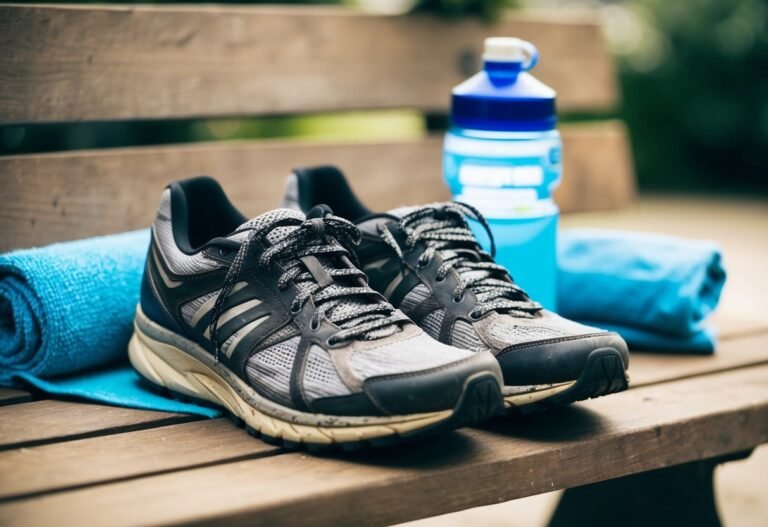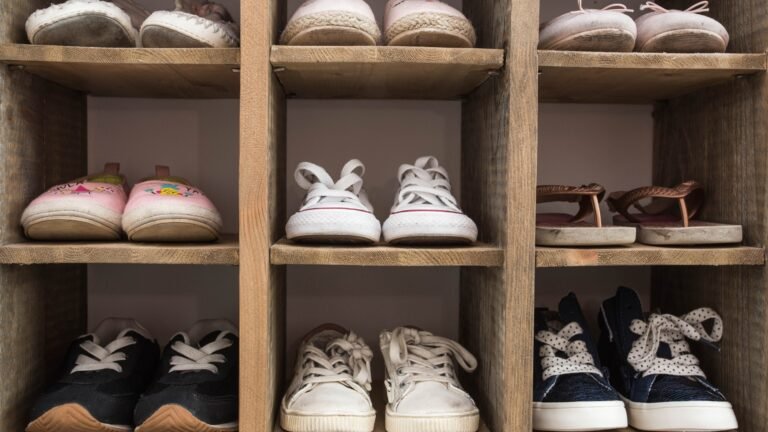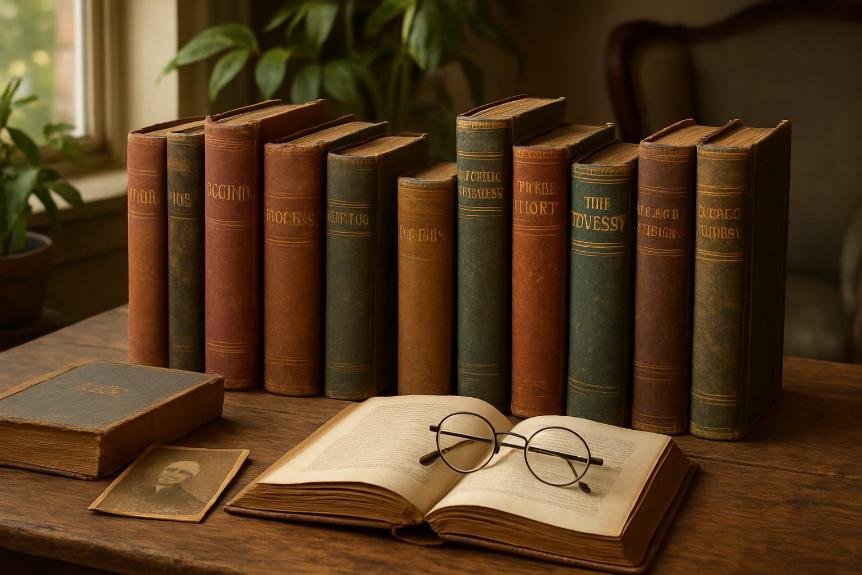Why Indian Students Wear Slippers to School
Growing up in India, I quickly noticed something unique about our school dress code that always intrigued visitors: the widespread use of slippers. Unlike the stiff, formal shoes I saw in movies set in Western schools, we embraced the comfort and practicality of slippers. But why is this the case? Why do Indian students, including myself, prefer slippers over traditional school shoes?
The reasons behind this choice are not just about comfort. They’re deeply rooted in cultural practices, climate considerations, and even educational philosophies. From the sweltering heat of Indian summers to the emphasis on creating a relaxed learning environment, there’s a lot more to this practice than meets the eye. Let’s dive into the fascinating reasons behind why slippers are the footwear of choice for students across India.
Key Takeaways
- Slippers are preferred by Indian students due to cultural practices, climate considerations, educational philosophies, and religious beliefs, emphasizing comfort, respect, and humility in educational spaces.
- The tropical climate and practicality of slippers make them a sensible choice for daily wear in schools, facilitating better air circulation around the feet and reducing health issues.
- Slippers symbolize equality and inclusivity within the educational system, making education accessible to students from all socioeconomic backgrounds.
- The relaxed dress code, including the use of slippers, contributes to a more relaxed learning environment, positively affecting students’ focus, participation, and comfort.
- Slippers offer a blend of convenience and function, being well-suited to India’s varied climatic conditions, including hot summers and monsoon seasons.
- The widespread use of slippers in Indian schools is a reflection of broader societal values that prioritize comfort, practicality, and a student-friendly learning atmosphere.
Cultural Significance of Slippers in India
The choice of footwear, particularly the widespread use of slippers by Indian students, is deeply rooted in the country’s rich cultural tapestry. I’ve discovered that in many Indian households, footwear plays a significant role beyond its basic utility. Slippers, or as they’re commonly referred to in India, “chappals,” symbolize comfort, versatility, and a form of respect towards the sanctity of educational spaces.
One of the fascinating aspects of this practice is its connection to ancient traditions. In Indian culture, removing shoes before entering a home or a place of worship is an act of humility and respect. This custom extends to schools as well, fostering an environment of equality and respect among students and teachers. It’s interesting to note that this symbolic removal of shoes at the doorstep of a knowledge temple sets the stage for a more relaxed and congenial learning atmosphere.
Moreover, the climate plays a pivotal role in this preference for lighter footwear. India’s tropical climate means that heavy, enclosed shoes can be uncomfortable for daily wear, especially in the hotter months. Slippers offer a practical solution, allowing for better air circulation around the feet, thus minimizing discomfort and health issues such as fungal infections.
The adoption of slippers in schools also mirrors broader societal norms and preferences. They’re seen as an egalitarian form of footwear, easily accessible to students from various socioeconomic backgrounds. This democratization of footwear in educational institutions underscores the principle that education should be accessible and comfortable for all, irrespective of one’s financial standing.
In understanding the cultural significance of slippers in India, it’s clear that their use by students in schools is more than a mere practical choice. It’s a reflection of deep-seated values and traditions that prioritize comfort, respect, and community within the educational sphere.
Practicality and Comfort
When I delve into the practical aspects of Indian students wearing slippers, or chappals, in schools, the reasons stand out for their simplicity and sensibility. It’s not just about adhering to tradition or promoting equality; there’s a tangible aspect of comfort and practicality that cannot be overlooked. India’s tropical climate plays a crucial role in this. With temperatures soaring during most of the school year, the breathability and lightness of slippers become a necessity rather than a mere choice.
I’ve come to understand how these chappals embody the perfect blend of convenience and comfort. Unlike the constricting nature of formal shoes, slippers allow for air circulation around the feet, reducing the discomfort brought about by heat and humidity. This is particularly significant for young students who are active throughout the day, both inside classrooms and on the playgrounds.
Beyond the climate, the practical design of slippers caters to the fast-paced, bustling environment of Indian schools. The ease with which they can be slipped on and off not only facilitates the tradition of removing footwear before entering certain areas but also streamlines the process, making it swift and efficient. For educators and students alike, this aspect of practicality ensures that no time is wasted, maintaining the flow of the academic schedule without unnecessary interruptions.
Moreover, the durability and low cost of most slippers make them an economical choice for families. In a country as vast and varied as India, economic considerations often dictate daily choices. Slippers, being both affordable and long-lasting, tick these boxes effectively. This accessibility further supports the educational ethos of inclusivity, ensuring that all students, regardless of their socioeconomic status, can attend school comfortably and without undue financial pressure.
In sum, the choice of slippers by Indian students is deeply intertwined with practicalities that span climatic, economic, and logistical considerations. It’s a choice that speaks volumes about the adaptability and thoughtfulness embedded within the Indian educational system.
Climate Considerations
In addressing why Indian students predominantly wear slippers to school, climate plays a pivotal role. India’s geographical location near the equator subjects it to a predominantly tropical climate, characterized by long, hot summers, a season that covers the substantial part of the year. I’ve found through my research and personal experiences that temperatures during these months often soar above 30°C (86°F), with humidity levels that can make wearing closed shoes uncomfortable.
The design and material of slippers, typically made from rubber or other lightweight materials, are perfectly suited for this climate. They allow the feet to breathe, reducing sweat and discomfort. This is essential in a country where the heat can become oppressive, especially for young students who spend the majority of their day in school. The open design of slippers ensures air circulation, keeping the feet cool throughout the day.
Another aspect worth considering is the monsoon season, which brings heavy rains and high humidity across much of the country. During this period, waterlogged streets and muddy pathways become common, particularly in rural and semi-urban areas where many schools are located. Slippers, in this context, are not only more convenient but also safer, reducing the risk of slips and falls associated with wet conditions. They can be easily washed and dried, ensuring hygiene and comfort even during the relentless monsoon months.
The culmination of these climatic conditions creates an environment where traditional footwear, like slippers, isn’t just a matter of cultural preference but a necessity for comfort and practicality. This adaptability to the varied and often extreme weather conditions in India underscores the thoughtful consideration behind the ubiquitous use of slippers by students in schools across the nation.
Creating a Relaxed Learning Environment
Beyond the undeniable practicality and adaptability of slippers in India’s varied climate, there’s another layer to their widespread use in schools. It’s about fostering a relaxed, yet productive learning environment. I’ve discovered that the choice of footwear, surprisingly, can significantly impact students’ attitudes and performance in school.
Slippers, by their very nature, are less restrictive than formal shoes. They symbolize comfort and ease, making students feel more at ease in the academic setting. This psychological comfort can translate into better focus and engagement in class. Studies suggest that when students are comfortable, they’re more likely to participate actively and absorb more information.
In my conversations with educators across India, many echo the sentiment that a more relaxed dress code, including the allowance for slippers, contributes to reducing stress among students. School can be a high-pressure environment, with academic performance, extracurricular activities, and social dynamics all weighing heavily on students. By allowing slippers, schools send a subtle message that it’s okay to be comfortable, that you’re in a safe space designed not just for learning but for growing at your own pace.
Moreover, the informal footwear policy aligns with broader educational objectives. It encourages students to express their individuality, fostering a sense of autonomy and confidence. In a country as diverse as India, where uniformity is often emphasized, this small act of personal expression is particularly meaningful.
At the core, the choice of slippers in schools is about much more than weather or convenience. It’s a thoughtful consideration of how environment affects learning, an acknowledgment that education isn’t just about filling minds with facts but nurturing well-rounded, comfortable, and confident individuals. This approach, aligning physical comfort with psychological well-being, points to a deeper understanding of how to create an effective, inclusive learning environment.
Conclusion
I’ve delved into the reasons behind Indian students wearing slippers in school and it’s clear that this practice is more than just about dealing with the heat. It’s about creating an atmosphere where comfort and learning go hand in hand. By encouraging slippers, schools are not just looking after the physical well-being of their students but are also taking significant steps towards improving mental health and academic performance. This approach reflects a deeper understanding of the connection between comfort, individuality, and education. It’s a testament to the innovative ways educators are working to create environments where students can truly thrive.
Frequently Asked Questions
What are the benefits of using slippers in Indian schools?
Wearing slippers in Indian schools provides numerous benefits, including enhanced comfort, a relaxed learning environment, improved student attitudes, and potentially better academic performance. This approach is believed to reduce stress and promote individuality among students.
How do slippers contribute to a relaxed learning environment?
Slippers contribute to a relaxed learning environment by providing physical comfort, which in turn reduces stress levels among students. This comfortable setting helps in maintaining a calm and conducive atmosphere for learning.
Do educators support the use of slippers in schools?
Yes, many educators support the use of slippers in schools. They believe that such an informal footwear policy aligns with broader educational goals by fostering a positive learning environment, reducing student stress, encouraging individuality, and supporting psychological well-being.
Can wearing slippers in school improve student performance?
Wearing slippers in school is associated with creating a more relaxed and comfortable learning environment, which can lead to improved student attitudes and potentially better academic performance. The reduction in stress and increase in comfort are believed to positively impact students’ ability to learn and perform.
How does the slipper policy align with educational goals?
The slipper policy aligns with educational goals by nurturing well-rounded and confident individuals. It emphasizes physical comfort and psychological well-being, aiming to create a conducive atmosphere that supports both learning and personal development.











